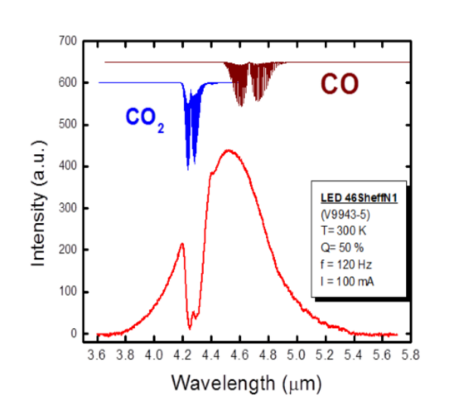Mid-Infrared LED Characterisation
Categories: Material & Chemical, Photonics & Optoelectronics, R&D

The mid-infrared spectral region is of enormous interest as the practical realisation of optoelectronic devices operating in the 2-5 µm wavelength range offers potential applications in a wide variety of areas.
The mid-infrared contains the fundamental fingerprint absorption bands of a number of pollutant and toxic gases and liquids such as methane (3.3µm), CO2 (4.2µm) and CO (4.6µm), requiring accurate, in situ multi-component monitoring in a variety of different situations (oil-rigs, coal mines, landfill sites, car exhausts) and in concentrations, ranging from ppb to almost 100%.
The mid-infrared also provides unique fingerprints with strong absorption bands for drug intermediates, pharmaceuticals, narcotics and bio-chemicals allowing highly selective and sensitive detection or imaging. It follows that the mid-infrared is very attractive for the development of sensitive optical sensor instrumentation.

By using LEDs or diode lasers tuned to these key absorption bands one can readily envisage highly sensitive and gas specific sensors based on optical absorption.
Spectrum of 4.6µm LED measured with Bentham TMc300-based IR spectroradiometer
(Images and application information courtesy of Dr Peter Carrington, University of Lancaster)
